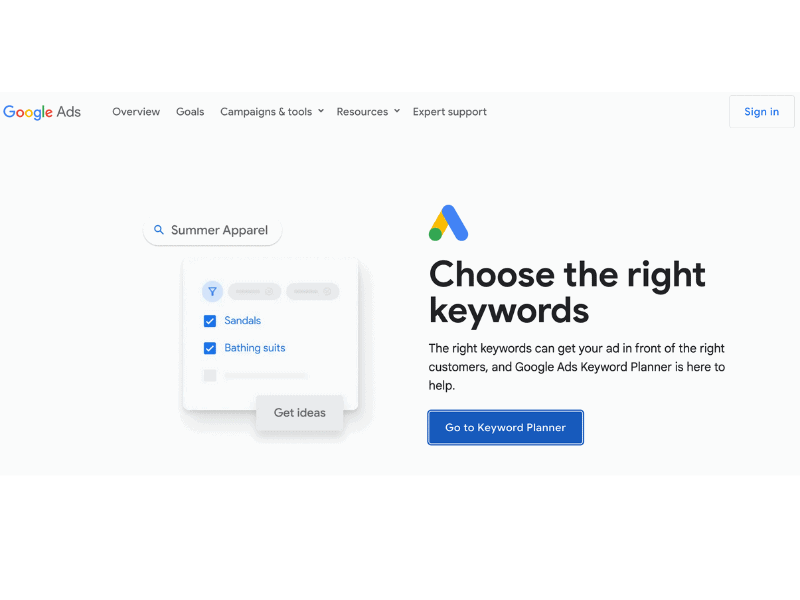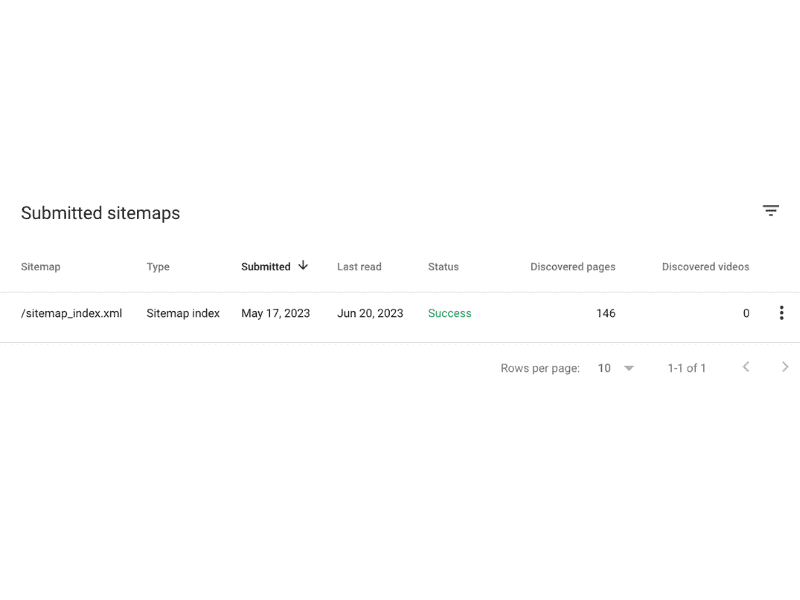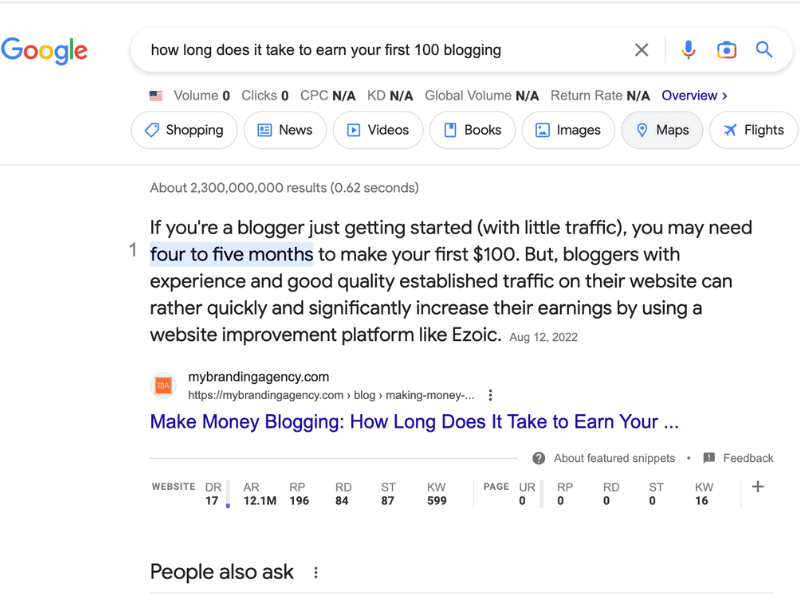In digital content production, being mindful of the common SEO mistakes that can hinder your online presence is crucial. By avoiding these errors, you can enhance your website’s visibility and reach a wider audience. This article will delve into the most prevalent SEO mistakes and provide valuable insights on rectifying them. Whether you are a seasoned content creator or just starting, understanding and learning from these mistakes will significantly benefit your overall SEO strategy.
I emphasize the continuous execution of tests on my website to ascertain the essential ranking factors and how they contribute to overall performance. My tests involve maintaining a dedicated set of test pages for SEO experiments.
Regarding Google’s comprehension of web page content, it’s crucial to understand that Google functions as an algorithm and requires specific data to grasp the information. Google assigns varying weights or importance scores to different page sections, emphasizing certain areas more than others. Consequently, strategically placing essential keywords in these high-priority sections is advisable.
To illustrate this point, consider a scenario where two individuals write a blog post about a lasagna recipe. Will Google evaluate and commend one writer for superior ingredients and a better recipe? Will it delve into the writer’s culinary education or professional experience? The answer is no.
Now, let’s delve into Common SEO Mistakes to Avoid in Digital Content Production: Learn from the Most Common Errors and How to Fix Them. This blog post aims to explore prevalent errors in SEO and provides valuable insights on rectifying them.
Mistakes to Avoid in Digital Content Production: Common SEO Pitfalls
Regarding digital content production, it’s essential to be aware of the most common SEO mistakes that content creators and website owners often make. Understanding and avoiding these pitfalls can significantly improve your search engine rankings and drive more organic traffic to your site. Let’s delve into these common SEO mistakes in content creation and explore effective strategies to fix them.
1. Neglecting Keyword Research:
One of the most prevalent mistakes in digital content production is overlooking the importance of comprehensive keyword research. With a thorough understanding of the keywords relevant to your target audience, it becomes easier to optimize your content effectively. Proper keyword research allows you to identify valuable keywords and incorporate them strategically into your content, improving your chances of ranking higher on search engine results pages (SERPs).
2. Ignoring Search Intent:
Failing to align your content with the search intent of your target audience is a common SEO mistake. Understanding the purpose behind a user’s search query and tailoring your content to fulfill their needs and expectations is crucial for engagement and rankings. Take the time to research and analyze the search intent behind your target keywords, and then create content that satisfies those intents to provide value to your audience.
3. Inadequate Internal Linking:
Internal linking is often underestimated but plays a significant role in SEO. Remembering to include relevant internal links within your content can help search engine crawlers understand the structure and hierarchy of your website. It also affects user navigation and the distribution of link authority. Ensure that you strategically incorporate internal links throughout your content to guide search engines and users, enhancing the user experience and boosting SEO.
4. Overemphasis on Generic Keywords:
Relying solely on generic keywords without targeting specific long-tail keywords is a mistake. Generic keywords often have high competition and may not bring targeted traffic to your site. Conduct thorough keyword research to identify relevant long-tail keywords specific to your niche. By incorporating these keywords naturally into your content, you increase the chances of attracting qualified visitors and improving your rankings for more targeted search queries.
5. Lack of Optimization for Mobile Users:
With the increasing prevalence of mobile devices, optimizing your website for mobile users is essential. Please do so to ensure a good user experience and higher rankings. Ensure your website design is responsive and mobile-friendly, providing a seamless browsing experience across various devices. This optimization caters to the growing number of mobile users and can positively impact your SEO performance.
By avoiding these common SEO mistakes in digital content production, you can enhance the visibility and performance of your website, attract more organic traffic, and improve your search engine rankings. Implementing effective SEO strategies and staying up-to-date with the latest trends and best practices will contribute to long-term success in your online presence.
Enhancing Subtopic Coverage and Content Production for Digital Media
Let’s say you’re trying to create content for the keyword “how to plan a wedding,” there are numerous subtopics to consider. The possibilities are endless, from wedding locations and themes to colors, food, and activities. But how do you identify the subtopics to include in your content? Look only as far as the top-ranking sites on Google, which have gained favor with the search engine. You can’t go wrong by studying their approach and incorporating your unique insights. Emphasizing sub-topic coverage is a powerful technique that yields impressive results.
Optimizing Your Online Content: Key SEO Strategies

Topical Authority: One crucial aspect of achieving online success is establishing Topical Authority, wherein you delve into each subject extensively, surpassing your competitors’ coverage. A prolonged focus on a particular topic significantly contributes to your overall credibility. When you attain the status of Topical Authority, Google recognizes and rewards your efforts by ranking you higher and faster than others in your niche. Undoubtedly, Topical Authority wields significant influence and can effectively overcome various ranking obstacles.
To harness the power of Topical Authority, it is imperative to move beyond creating a limited number of articles solely focused on your main topic. Instead, it would be best if you strived to cover various subtopics related to your primary subject matter. For instance, suppose you are writing about the best CBD oil. In that case, your content should include a pillar article on this specific topic and explore CBD benefits, CBD side effects, CBD drinks, CBD gummies, CBD and pets, and other related aspects. By extensively covering these subtopics, you compel Google to acknowledge your expertise and regard you as an authority in the field.
I employed the strategy of Topical Authority to transform my website from receiving under 50 daily visitors to an impressive 1,000 visitors per day—an exponential growth of over a thousand percent. Undeniably, Topical Authority is a crucial ranking factor that holds immense potential and warrants the attention it receives. Once you grasp and implement the concept effectively, your online presence can be a game changer.
The journey towards achieving Topical Authority begins with constructing a comprehensive topical map, outlining every piece of content you must produce. By mapping out your content strategy, you set yourself up for success in establishing Topical Authority and reaping the accompanying rewards.
Topical Authority is a game-changing SEO strategy and process, demanding thorough coverage of each topic and maintaining a prolonged focus. By expanding your content horizons and establishing yourself as an authority in your niche, you unlock the potential to attract more significant organic traffic and achieve remarkable growth. Remember to create a topical map to guide your content creation process, and embrace the power of Topical Authority to elevate your online presence to new heights.
NLP: NLP, short for Natural Language Processing, is vital in helping Google interpret and understand what we communicate. To optimize your content for NLP, you need to structure it in a way that aligns with Google’s comprehension capabilities.
When it comes to optimizing your online content for search engine visibility, several important factors must be considered. One crucial aspect is Natural Language Processing (NLP), which refers to how search engines like Google understand human language and convert it into machine-readable code. Ensuring that your content is easily comprehensible for Google’s NLP is essential. Let’s delve into the key strategies to achieve this.
1. Incorporate the Main Search Query: Begin by echoing the main search query within your content. This repetition helps Google’s NLP algorithms grasp the central topic you’re addressing.
2. Add the Word “Is” and Provide an Answer: Using “is” to introduce your response after echoing the search query. Clearly and concisely present the answer to the query, ensuring it aligns with the search intent. If there are any relevant units associated with the answer, include them as well. Here’s how you do it. What is the best temperature to brew coffee? Echo back the main search query in your content: (The best temperature to brew coffee), add the word IS, and then give your answer. The best temperature to brew coffee is between 195°F and 205°F.
Following this clear and simple structure makes it effortless for NLP algorithms to comprehend your content. This approach enhances your chances of ranking higher in search engine results.
Optimizing your online content requires careful consideration of various factors, with NLP being critical. By structuring your content to align with Google’s NLP capabilities, you can increase your chances of achieving better rankings and attracting more organic traffic. Stay mindful of these strategies and continually analyze and adapt to maximize your SEO success.
Optimizing Content Length: Avoiding Common SEO Mistakes and Maximizing Digital Content Strategy
Determining the ideal word count for Google-friendly content can be misleading. Rather than relying on a fixed number like 3,000 words, it’s essential to understand that Google explicitly stated otherwise in the release of the Google helpful content update. It may lead you astray if you’re fixated on a specific word count because you’ve heard about Google’s preferred length.
An alternative approach is to analyze the word count of top-ranking articles on Google and calculate an average. These articles have earned Google’s favor, indicating they may have found the right balance to address the query effectively. This strategy has proven successful since Google recognizes that describing a spaghetti recipe doesn’t require an excessive 10,000 words while explaining a transition to a vegan diet necessitates more than a brief 300 words.
Understanding Search Intent and Meeting User Expectations
Search intent plays a crucial role in optimizing your online content for SEO. Failing to align your content with the user’s search intent can lead to poor engagement and rankings. To avoid common SEO mistakes in digital content production, conducting thorough research and identifying the search intent behind your target keywords is essential. You can create content that meets their needs and expectations by understanding what your audience is looking for.
Failure to Submit a Sitemap

A site map serves as a comprehensive inventory of all the indexable pages within your website, aiding users and search engines in navigating and locating information. Notably, Google has incorporated the utilization of site map files (.xml) into specific algorithms, a practice believed to have a positive impact on search rankings.
Most Content Management Systems (CMS) offer the functionality to generate site maps effortlessly. Additionally, you can directly submit your site map to Google through the Google Search Console, ensuring efficient indexing of your website’s content.
Read about: Is SEO becoming obsolete?
A Guide to Setting Up Google Search Console
Configuring Google Search Console is essential in optimizing your website’s performance in search engine rankings. By avoiding common SEO mistakes and leveraging the power of this tool, you can improve your digital content production and increase your online visibility.
Google Search Console is an invaluable, cost-free service that enables you and your business to effectively monitor and optimize your website’s presence and performance within Google search results. By focusing on the outcomes of Google searches, this indispensable tool empowers you to diagnose issues, identify areas of success, and implement necessary improvements.
Upon signing up for Google Search Console, you gain a comprehensive view of your website’s problems, including insights into your most visited pages, prominent keywords, and areas requiring enhancement. You can effortlessly stay informed and promptly address these issues through email alerts, ensuring their swift resolution.
Here are a few additional examples of the Console’s capabilities:
1. Verify the discoverability of your website by Google and ensure successful crawling of your content.
2. Detect and rectify any indexing difficulties, or request re-indexing for new or updated content.
3. Access your website’s Google Search traffic data, encompassing its visibility in search results, the queries that lead users to your pages, and the frequency of clicks on those queries, consequently directing users to your website.
4. Receive valuable email notifications regarding site-related concerns, facilitating rapid identification and resolution of problems.
5. Explore the websites and specific pages that link back to your own, enabling you to gauge external sources of traffic and influence.
Why is Google Search Console necessary for your website?
If you own a business and have a website, Google Search Console is an indispensable tool for optimizing your SEO (Search Engine Optimization) potential. Its primary purpose is to ensure internet users can quickly discover your site and increase its visibility.
Additionally, Search Console provides valuable assistance in managing your website effectively. It allows you to review and comprehend your site analytics, monitor traffic, and track essential metrics. The insights gained from these metrics can make or break your site’s performance on the web. Let’s take a closer look at the four key metrics:
1. Impressions: This metric indicates how frequently your pages appear in Google search results.
2. Clicks: The number of users who click through to your site from Google search.
3. Average CTR: CTR, or clickthrough rate, measures the proportion of people who view your site in search results and proceed to click on it.
4. Average position: This metric shows the ranking of your site’s keywords and pages on Google search pages.
Access to these powerful tools enables you to identify and resolve maintenance problems, server errors, and site loading issues. Furthermore, they play a crucial role in enhancing your site’s security.
Google Search Console is undeniably an invaluable asset for your business. However, comprehending and utilizing this tool’s features and functionalities may take time and effort.
Read about: what is a backlink in SEO
Unlocking the Power of Featured Snippets: How to Optimize Your Content

When targeting a Google Featured Snippet, it’s crucial to structure your content effectively. Follow these steps to increase your chances of winning the coveted position:
1. Craft a Compelling Introduction: Begin your blog post with a concise introduction that establishes rapport and addresses the main search query in everyday language.
2. Create an Answer Target: Provide an encyclopedic answer to the search query within approximately 300 characters. This answer target should strive to offer the best possible response to the query.
3. Break Down the Topic: Divide the topic into three sections related to the main search query. For instance, if the query is “What type of helmet should I buy for a 7-year-old?,” your sections could cover “Helmet types available,” “Cost of different helmets,” and “Safety ratings and considerations for child helmets.”
4. Write Subheadings: Assign a subheading to each section. These subheadings should be captivating and accurately reflect the content within each segment. The goal is to entice readers to click on your article if it appears in search results.
5. Expand on Subheadings: Write a few paragraphs elaborating on each subheading, providing detailed information and insights. Aim to offer a comprehensive answer that equips readers with the necessary knowledge to address their query thoroughly.
By following this approach, your article will have a total word count of around 1,000, ensuring a substantial and informative response post. Remember, the ultimate objective is to secure a Google Featured Snippet, so optimize your content accordingly.
Internal Linking Done Right: Avoiding Common SEO Missteps
1. Relevant anchor text: When incorporating internal links, ensure that the anchor text is descriptive and provides context about the linked page’s content. Avoid using generic terms like “click here” or “read more” as anchor text. Instead, use relevant keywords that accurately describe the linked content.
2. Balance the number of links: While internal links are beneficial, overdoing them can appear spammy and confuse users and search engines. Aim for a reasonable number of internal links that enhance the user experience and improve content discoverability without overwhelming the reader.
By avoiding these common SEO mistakes in digital content production, you can improve your website’s visibility, attract organic traffic, and achieve better search engine rankings.
Avoiding Common Mistakes for Successful Digital Content Production
In digital content production, it is crucial to understand and avoid common SEO mistakes that can hinder your online presence and success. By learning from the most prevalent errors and understanding how to rectify them, you can optimize your content and achieve better search engine rankings. From failing to submit a sitemap to overlooking search intent and user expectations, these mistakes can significantly impact your website’s visibility and traffic. However, by implementing key SEO strategies, setting up Google Search Console, and unlocking the power of featured snippets, you can enhance your content’s performance and ensure it reaches your target audience effectively. You can boost your domain authority and attract more organic traffic by avoiding generic keywords, optimizing titles and meta tags, and incorporating internal links. Good keyword research is essential for understanding your audience and providing the content they seek. Embrace the power of digital marketing, web design, and content marketing to engage your readers and improve your website’s overall performance. By avoiding these common SEO mistakes and implementing proven techniques, you can take your online presence to new heights and achieve remarkable results.


